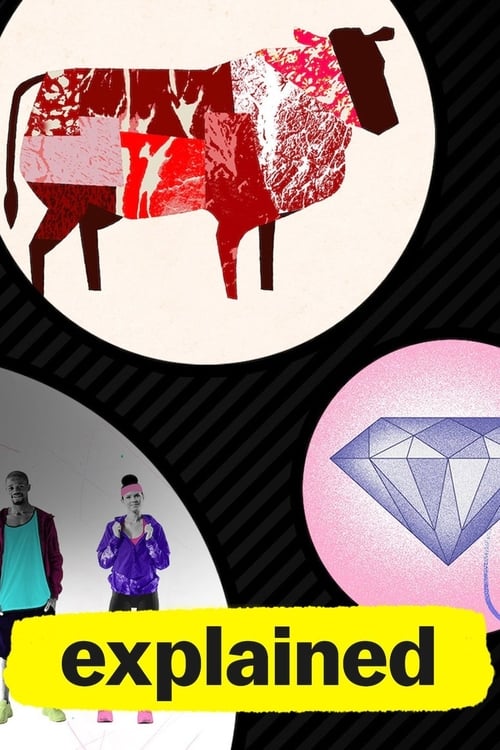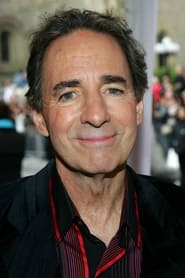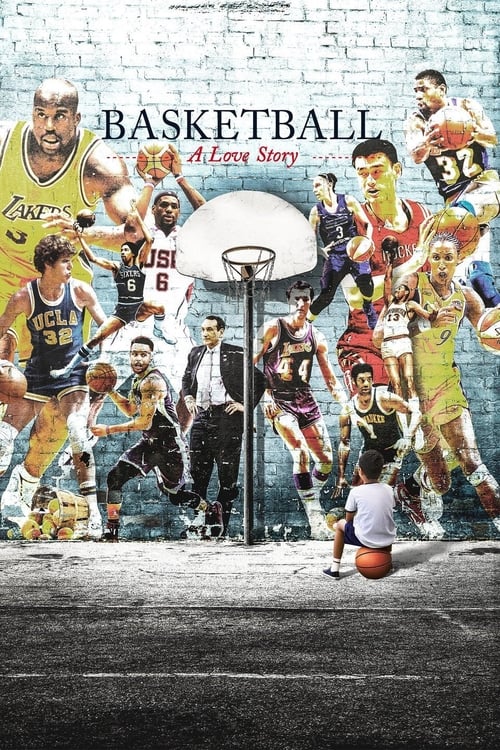
Ask Your Own Question
What is the plot?
In "The Comedy of Real Life," the episode opens with a montage of various comedians discussing the nature of comedy and how it often reflects real-life experiences. The tone is set with clips of stand-up performances that highlight the struggles and absurdities of everyday life. The audience is introduced to the idea that comedy can serve as a coping mechanism for real-world issues.
The episode then transitions to a segment featuring prominent comedians like Jerry Seinfeld and Chris Rock, who share personal anecdotes about their lives. Seinfeld recounts his early days in comedy, emphasizing how his observations of mundane situations became the foundation for his humor. He describes the process of turning everyday occurrences into relatable jokes, illustrating the connection between real life and comedic material.
Next, the focus shifts to the impact of personal experiences on comedic storytelling. Comedians like Ellen DeGeneres and Louis C.K. discuss how their own life challenges, such as relationships and family dynamics, have influenced their comedic styles. DeGeneres shares a poignant story about coming out and how it shaped her career, while Louis C.K. reflects on the darker aspects of his life that he incorporates into his routines, revealing the vulnerability behind his humor.
The episode then explores the role of observational comedy, featuring clips from various stand-up performances that highlight the art of finding humor in the ordinary. Comedians analyze how they craft jokes from their surroundings, with a focus on the nuances of human behavior. This segment emphasizes the skill involved in transforming real-life situations into comedic gold, showcasing the meticulous thought process behind joke writing.
As the episode progresses, it delves into the concept of tragedy and comedy being intertwined. Comedians like Robin Williams and Tina Fey discuss how they have used humor to navigate difficult times in their lives. Williams' struggles with mental health are highlighted, illustrating how he often turned to comedy as a means of coping. Fey shares her experiences in the entertainment industry, emphasizing the importance of humor in overcoming obstacles and finding joy amidst chaos.
The narrative then shifts to the influence of social and political issues on comedy. Comedians such as Jon Stewart and John Oliver discuss how they use satire to address serious topics, blending humor with commentary on current events. Clips from "The Daily Show" and "Last Week Tonight" are shown, demonstrating how these comedians tackle complex issues while still making audiences laugh. The episode highlights the responsibility comedians feel to address societal problems through their work.
In the final segment, the episode reflects on the evolution of comedy over the years, showcasing how comedians have adapted their styles to resonate with changing cultural landscapes. The discussion includes the rise of social media and its impact on comedy, with comedians like Kevin Hart and Amy Schumer sharing their experiences in the digital age. They discuss the challenges and opportunities that come with reaching audiences through platforms like Twitter and Instagram.
The episode concludes with a montage of comedians performing, interspersed with their reflections on the importance of authenticity in comedy. They emphasize that the best humor often comes from genuine experiences and emotions, leaving the audience with a sense of connection to the real-life stories that inspire laughter. The screen fades to black, leaving viewers with the understanding that comedy is deeply rooted in the human experience.
What is the ending?
In the ending of "The Comedy of Real Life," the episode wraps up by highlighting the various ways comedians draw from their personal experiences and the realities of life to create humor. It emphasizes the importance of authenticity in comedy, showcasing how real-life struggles and triumphs can resonate with audiences. The episode concludes with reflections from several comedians about the impact of their life stories on their comedic styles.
As the episode nears its conclusion, the narrative shifts to a series of poignant moments that encapsulate the essence of comedy derived from real life.
Scene 1: The camera pans to a small, intimate comedy club where a stand-up comedian takes the stage. The audience is filled with a mix of laughter and thoughtful expressions as the comedian shares a personal story about a challenging moment in their life. The lighting is warm, creating an inviting atmosphere. The comedian's vulnerability resonates with the audience, illustrating how humor can emerge from pain and struggle.
Scene 2: Transitioning to a montage, the episode showcases various comedians reflecting on their journeys. Each clip is interspersed with snippets of their performances, revealing how they weave their life experiences into their routines. One comedian discusses the loss of a loved one and how that grief transformed into a source of comedic material. The emotional weight of their words is palpable, and the audience can feel the sincerity behind the laughter.
Scene 3: The narrative then shifts to a roundtable discussion featuring several prominent comedians. They share insights about the balance between humor and reality, emphasizing the importance of authenticity in their work. One comedian passionately speaks about how their upbringing shaped their comedic voice, while another reflects on the societal issues they address through humor. The camaraderie among them is evident, showcasing a shared understanding of the struggles they face as artists.
Scene 4: The episode culminates in a powerful moment where a comedian performs a set that encapsulates the themes discussed throughout the episode. The audience is visibly moved, laughing and crying in equal measure. The comedian's ability to connect deeply with the audience highlights the transformative power of comedy. As the performance ends, the audience erupts in applause, a testament to the impact of sharing real-life experiences through humor.
Scene 5: In the final moments, the screen fades to black, and a voiceover from one of the comedians reflects on the journey of finding humor in life's challenges. They express gratitude for the ability to share their stories and connect with others through laughter. The episode closes with a reminder that comedy is not just about making people laugh; it is also about understanding and relating to the human experience.
In summary, the episode concludes by reinforcing the idea that the best comedy often comes from real life, with each comedian finding their unique voice through their personal experiences. The fate of the main characters--each comedian featured--leaves them empowered and validated in their craft, having shared their truths and connected with audiences on a profound level.
Is there a post-credit scene?
In the episode "The Comedy of Real Life" from The History of Comedy, there is no post-credit scene. The episode concludes without any additional content after the credits roll. The focus remains on the exploration of how real-life events and personal experiences have shaped comedic narratives, leaving viewers with a deeper understanding of the relationship between reality and humor.
What real-life events are highlighted in this episode to illustrate the concept of comedy?
The episode delves into various real-life events that have been transformed into comedic narratives, showcasing how personal experiences and societal happenings can serve as rich material for humor. It includes anecdotes from comedians who draw from their own lives, such as stories of family dynamics, personal struggles, and cultural observations.
Which comedians are featured in this episode, and what personal stories do they share?
The episode features a range of comedians, including Jerry Seinfeld and Chris Rock, who share personal anecdotes that reflect their unique perspectives on life. Seinfeld discusses the humor found in mundane daily experiences, while Rock reflects on his upbringing and how it shaped his comedic voice.
How does the episode explore the relationship between tragedy and comedy?
The episode examines the thin line between tragedy and comedy by showcasing how comedians use their painful experiences as fodder for humor. It highlights specific instances where comedians turned personal loss or societal issues into comedic material, illustrating the cathartic power of laughter.
What role does audience reaction play in the storytelling of real-life comedy in this episode?
Audience reaction is a crucial element in the episode, as it demonstrates how laughter can validate a comedian's material. The episode includes clips of live performances where the audience's response shapes the delivery and timing of jokes, emphasizing the interactive nature of comedy.
Are there any specific examples of comedic styles that emerge from real-life experiences in this episode?
Yes, the episode highlights various comedic styles that stem from real-life experiences, such as observational comedy, storytelling, and dark humor. Comedians like Ellen DeGeneres and Louis C.K. are discussed for their distinctive approaches, showcasing how their personal narratives influence their comedic techniques.
Is this family friendly?
"The History of Comedy," season 1, episode 3, titled "The Comedy of Real Life," explores various aspects of comedy that stem from real-life experiences and societal issues. While the episode is generally informative and engaging, there are a few elements that may be considered objectionable or upsetting for children or sensitive viewers:
-
Discussion of Sensitive Topics: The episode delves into themes such as tragedy, personal struggles, and societal issues that can be heavy and may not be suitable for younger audiences.
-
Use of Strong Language: There may be instances of strong language or adult humor that could be inappropriate for children.
-
Real-Life Struggles: The episode features stories of comedians who have faced significant personal challenges, including mental health issues, addiction, and loss, which could be distressing for some viewers.
-
Dark Humor: Some comedic styles discussed may involve dark humor that touches on sensitive subjects, which might not resonate well with all audiences.
-
Emotional Content: The emotional weight of certain stories may evoke feelings of sadness or discomfort, particularly for those who have experienced similar situations.
Overall, while the episode provides valuable insights into the nature of comedy, it contains elements that may require parental discretion for younger viewers.



























































